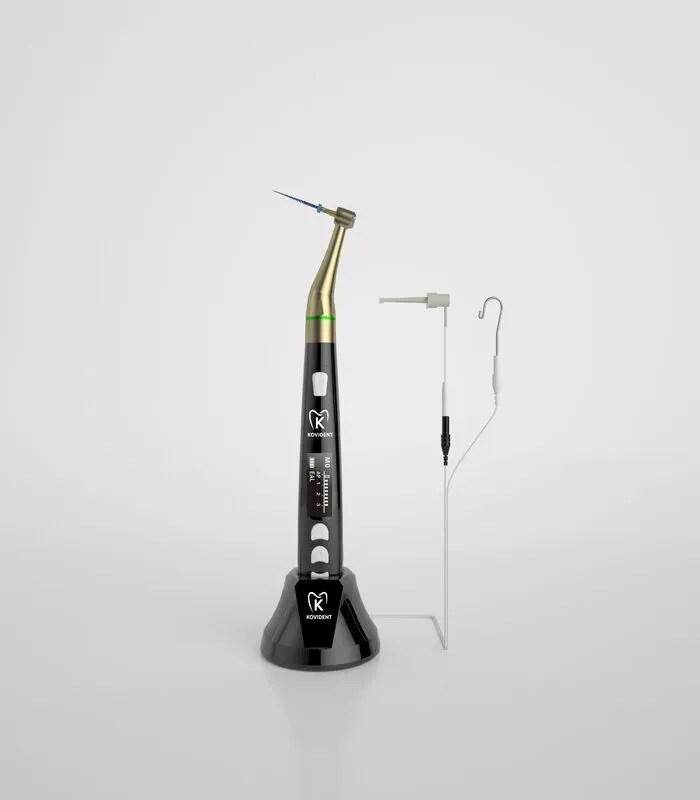By Dr Deepali Bhandari BDS I Product Executive at KoviDent
INTRODUCTION
Over the years in dentistry, one thing has become clear successful root canal treatment depends as much on technique as it does on the tools we use. With rotary endodontics becoming a routine part of clinical practice, we’ve gained speed and efficiency, but we’ve also had to navigate new challenges like sudden file breakage. That’s where torque control steps in. It’s not just a high-tech feature, it’s a silent safeguard that helps to prevent mishaps during the canal shaping.



TORQUE IN ENDODONTICS
In simple terms, torque is the amount of rotational force applied by the endomotor to the file inside the canal. When the file meets resistance due to anatomy, calcification, or improper angulation , the torque increases. If it goes beyond a certain limit, the file is likely to snap. Not only does this disrupt the procedure, but it can also lead to complications like apical blockage or perforation.
This is where torque control becomes invaluable. A torque-controlled endomotor monitors the resistance in real-time and adjusts its rotation according.
WHY SHOULD CLINICIAN CARE
In day-to-day practice, most clinicians are focused on patient comfort, clinical speed, and successful obturation. But a broken file in a mid-procedure can derail the entire treatment and your day. Here’s why torque control is worth paying attention to: (a) It prevents sudden file breakage, especially in curved canals. (b) It helps maintain canal anatomy during shaping. (c ) It gives you mental ease, knowing there’s a backup if resistance spikes. (d) It enhances file lifespan, saving cost in the long run. “It reminded me that even experienced hands can get benefit from smart technology.”
HOW KoviDent Endomotors FIT IN
One of the most noticeable advantage of Kovident Endomotors lies in their ability to simplify yet strengthen clinical decision making during root canal therapy. Instead of relying on trial and error torque settings or spending time adjusting parameters, their motors are pre-equipped with the file specific presets that closely matches the leading file systems like ProTaper Gold, HyFlex CM, and MTwo. For the clinician, that means fewer variables to manage and more consistency across procedures.When working in tight, curved, or calcified canals, even small torque deviations can lead to file fatigue or separation. With KoviDent, you’re not getting a rotary motor, you’re getting a system that supports safer, smoother instrumentation from start to finish. This kind of support is particularly useful in busy practices where every minute and every detail counts.
What really makes KoviDent stand apart though, is its responsive torque feedback. Unlike many entry level motors that maintain a fixed torque, KoviDent’s motor senses resistance in real time and makes subtle adjustments on its own. If stress builds up,the system automatically engages reverse motion or torque reduction to prevent damage. It’s a subtle but incredibly valuable safeguard. Especially during retreatment or anatomically complex cases where canal walls can be thin and fragile. From a practical perspective, it reduces operator fatigue and builds confidence, especially for younger dentists or those transitioning into rotary endodontics. When a motor can work with you like that, intelligently adapting without disrupting your focus. It naturally becomes more than just a tool, it becomes a part of your workflow.



FINAL THOUGHTS
Torque control is one of those features that , once you’ve used in a daily practice , you wonder how you ever worked without it. It doesn’t take more for attention like newer gadgets might, but what it offers is far more valuable – It’s reliability. It steps in when you’re having a case of curved canal & can’t afford a mistake . It gives that slight reassurance in the back of your mind that if resistance builds up, your file won’t snap without warning. For me , and many colleagues I’ve spoken to , It becomes less of a tech upgrade and more of a clinical necessity. It’s not just about protecting your instruments . Its about protecting the tooth , the time you’ve invested . and ultimately , your patient’s trust . In a profession where even small missteps can lead to long term consequences, having that level of control makes a real difference . Torque controlled endomotors aren’t just helping us do the job, they’re helping us do it better , and more safely . And I think that’s something we can all stand behind.
